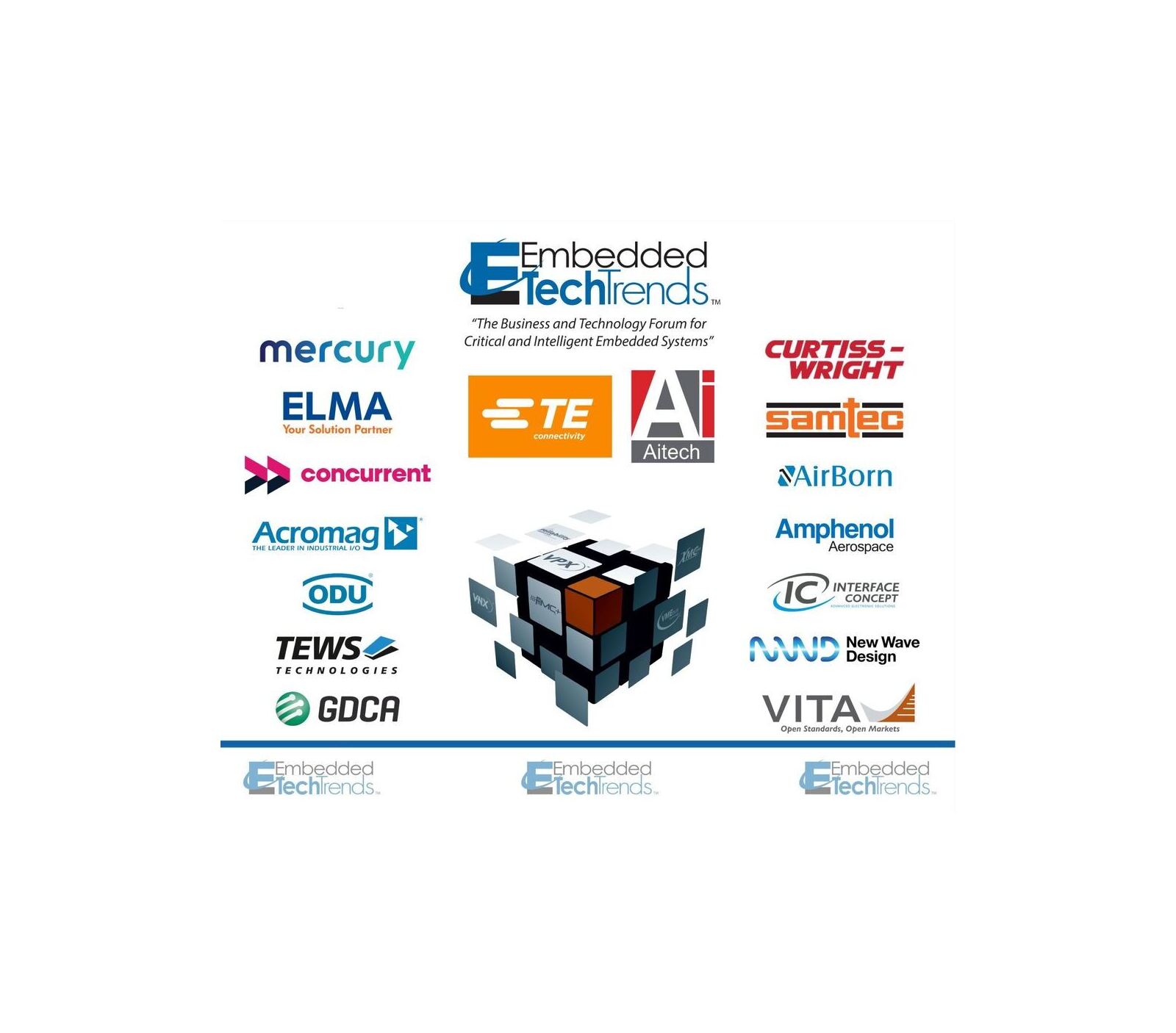Custom designs and closed architectures are quickly becoming anachronisms, as commonality and interoperability of components are now standard requirements in military programs. More than two decades have passed since the famous commercial-off-the-shelf (COTS) initiative hit the U.S. military market, and today common standards and COTS are now essential factors in every defense procurement equation. In this Q&A with Jerry Gipper, Executive Director of VITA – the trade association behind standards such as VMEbus and VPX, he discusses how the defense community has moved away from custom, roll-your-own designs of embedded systems and is embracing open standards and open architectures in programs such as the U.S. Army’s MORA and VICTORY. He also provides an introduction to a new initiative being developed between VITA and the U.S. Navy, called HOST. Edited excerpts follow.
MCHALE REPORT: Please provide a brief description of VITA, the markets it serves, how many members it currently has, member countries, and your role within the organization.
GIPPER: I am Executive Director for VITA, which is a trade association with a standards arm. VITA has been in existence for more than 30 years promoting open architectures, open standards, and open markets. Key standards developed by VITA include VMEbus and OpenVPX. We have about 130 members and are growing internationally with our latest member joining VITA from South Korea.
MCHALE REPORT: Today, VITA standards form the backbone of many key military embedded electronics systems such as radar, electronic warfare (EW), sonar, avionics, etc. Was the military always the primary market for VITA products or has that evolved over time?
GIPPER: Actually the original focus of VMEbus was the industrial controls market. Then the telecommunications industry picked it up about same time the U.S. Department of Defense (DoD) became interested. What drove the DoD’s interest was the commercial-off-the-shelf (COTS) initiative pushed by former DoD Secretary William Perry in 1994. The military’s use of VITA technology has only grown over the years with initiatives such as VICTORY [Vehicular Integration for C4ISR/EW (Command, Control, Communication, Computers, Intelligence Surveillance, and Reconnaissance/Electronic Warfare) Interoperability] for vehicle electronics and Modular Open RF Architecture (MORA) leveraging open architectures and VITA standards. New legislation was also recently proposed to encourage even more open architecture designs in U.S. defense systems.
MCHALE REPORT: The VME standard essentially made VITA famous. Is the market for VME-based products still growing — even three decades after the standard was first ratified? What military applications is it most likely to be designed into today?
GIPPER: I wouldn’t say VME use is growing, but it is rock solid. Curtiss-Wright Defense Solutions has produced a Helix PCI Express to VME64x interface that is FPGA-based and enables VME technology to be available even longer, addressing the challenge created when the Tsi148 (Tempe) VME interface device announced end-of-life. Military embedded systems will use VME forever and the Curtiss-Wright announcement extends the current technology at least 15 years. It is used in C4ISR applications as control and communications have always been the standard’s strong spots.
MCHALE REPORT: VPX, the follow-on to VME has shown significant growth in military radar and electronics warfare systems. Are there any new updates on the horizon for VPX?
GIPPER: We are working with the Naval Air Systems Command (NAVAIR) and the U.S. Army Materiel Command’s Communications-Electronics Research, Development and Engineering Center (CERDEC) to extend the VICTORY program to the Navy and Air Force through a program called Hardware Open Systems Technologies (HOST). Under HOST a working group with folks from NAVAIR and VITA are writing a three-tier VPX standard that will have open architecture characteristics on the top two tiers with the bottom tier being proprietary and containing the secret sauce for NAVAIR, Air Force, or any other U.S. military end-user. The secret sauce as it were would most likely be in the software or IP on a FPGA. This is essential when working with foreign militaries. They can share the first two tiers, but the third would be proprietary.
The same concept is used with SpaceVPX when it comes to sharing satellite specifications. Tiering the architecture means you don’t have to rewrite the standard for each individual application, enabling end-users to define specific tweaks to each standard that are proprietary, while the system as a whole remains interoperable and compatible with multiple suppliers, driving commonality. Last spring SpaceVPX (VITA 78) reached ANSI recognition as ANSI/VITA 78.00-2015.
MCHALE REPORT: How is VPX adoption faring outside of the U.S.?
GIPPER: I think it’s starting to really pick up, especially in Asia. Of the 30 new members VITA gained in the last 12 months about half of them are from Asia. They are producing VITA-based products, but I don’t know exactly what markets they are focused on. They do have their own defense departments/ministries, but they are also focused on transportation for safety critical applications in trains for example. Europe is still very much a stubborn market when it comes to VPX. Defense budgets are down in these countries and there are not as many companies in Europe focused on VITA specs. Most of the market share in Europe is owned by U.S. companies such as Curtiss-Wright, Mercury Systems, and Abaco Systems.
MCHALE REPORT: Reduced size, weight, and power (SWaP) requirements are hitting all applications in defense electronics. How has the VITA standards organization addressed these concerns in their specifications?
GIPPER: The nature of electronics is that they will get smaller and more powerful. This is nothing new and is not causing any changes to how we develop standards. Our VNX small form factor – for applications where VPX is too large – is slowly picking up steam.
MCHALE REPORT: Is the roll-your-own crowd — primes and integrators who design their own VME or VPX SBCs instead of outsourcing — still the biggest competitor for your members in the military marketplace?
GIPPER: That model is pretty much gone. These guys don’t roll much of anything on their own anymore. They are buying whole systems from embedded suppliers. That’s what VPX is all about – it’s a system sell. If you have a platform with the Navy and don’t roll your own VPX systems, you might throw a custom card or the like into the system, but it’s not like the old days. Companies such as Pentek still design FPGA-based signal processing boards, but often these are integrated in with systems designed by companies like Curtiss-Wright.
MCHALE REPORT: What are the biggest roadblocks remaining against adoption of open standards in military systems? And why?
GIPPER: If roadblocks exist, it would be with proprietary designs or with unique form factors that open systems cannot fit into. Cost can also be a roadblock, but usually not in signal processing applications that must use VPX. Cruise missiles and very small drones with very unique size requirements will likely not be leveraging open architectures. But these are exceptions to the rule as open architecture and open standards requirements are commonplace in DoD applications today.
MCHALE REPORT: How will having the military as part of the VITA Board of Directors enable greater adoption of VITA open standards?
GIPPER: They buy in from the beginning and it gets more people at the military and system integrator level interested in supporting a standard. For example, CERDEC has been mostly concerned with growing their supplier base as this drives down costs and increases options. CERDEC joined VITA last fall.
MCHALE REPORT: With the U.S. military currently as the primary user of VITA standards-based technology, what new regions and markets will be adapters of this technology across the globe?
GIPPER: VITA member companies reside in Russia, China, India, South Korea, the Middle East, Europe, etc. This is wonderful for the long-term growth of the technology, but as VITA standards-based solutions are used in U.S. military platforms we have to be very careful about International Traffic in Arms Regulations (ITAR) issues. So now that the data is protected according to ITAR under the HOST effort (see 4th question above) we can talk about not only more use of VPX and other VITA standards in foreign military systems but also the growing use of them in other markets such as transportation for intelligent highways and intelligent rail systems.
VPX systems are too big for automotive radar systems, but are ideal for the larger computer systems used for safety critical functions in intelligent highways. Smart highways need to have special control setups that are fast and high performance in a bay station type of structure. The same concept applies to smart rail transportation.
MCHALE REPORT: Looking forward, what disruptive technology/innovation will be a game changer for embedded electronics in military applications? Predict the future.
GIPPER: Optical solutions and new memory technologies as disc drives are obsolete. We also need to take advantage of multicore and processor technology. Some studies have shown that military users only take advantage of 30 percent of the capability that modern processors have. They need to find ways to use more of it, whether through new software algorithms or and some slightly different architectures. Once that happens our application base at VITA will only grow.








